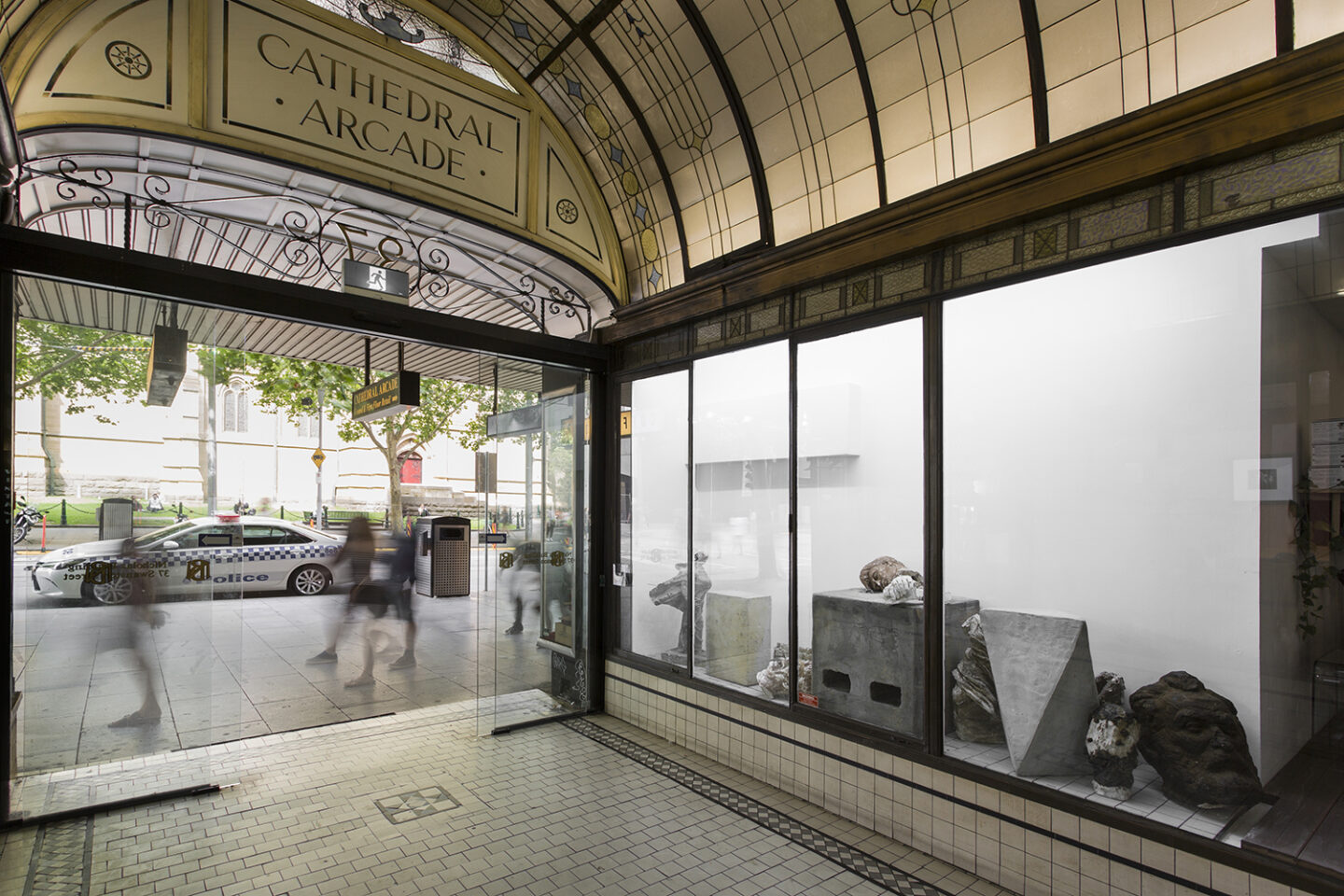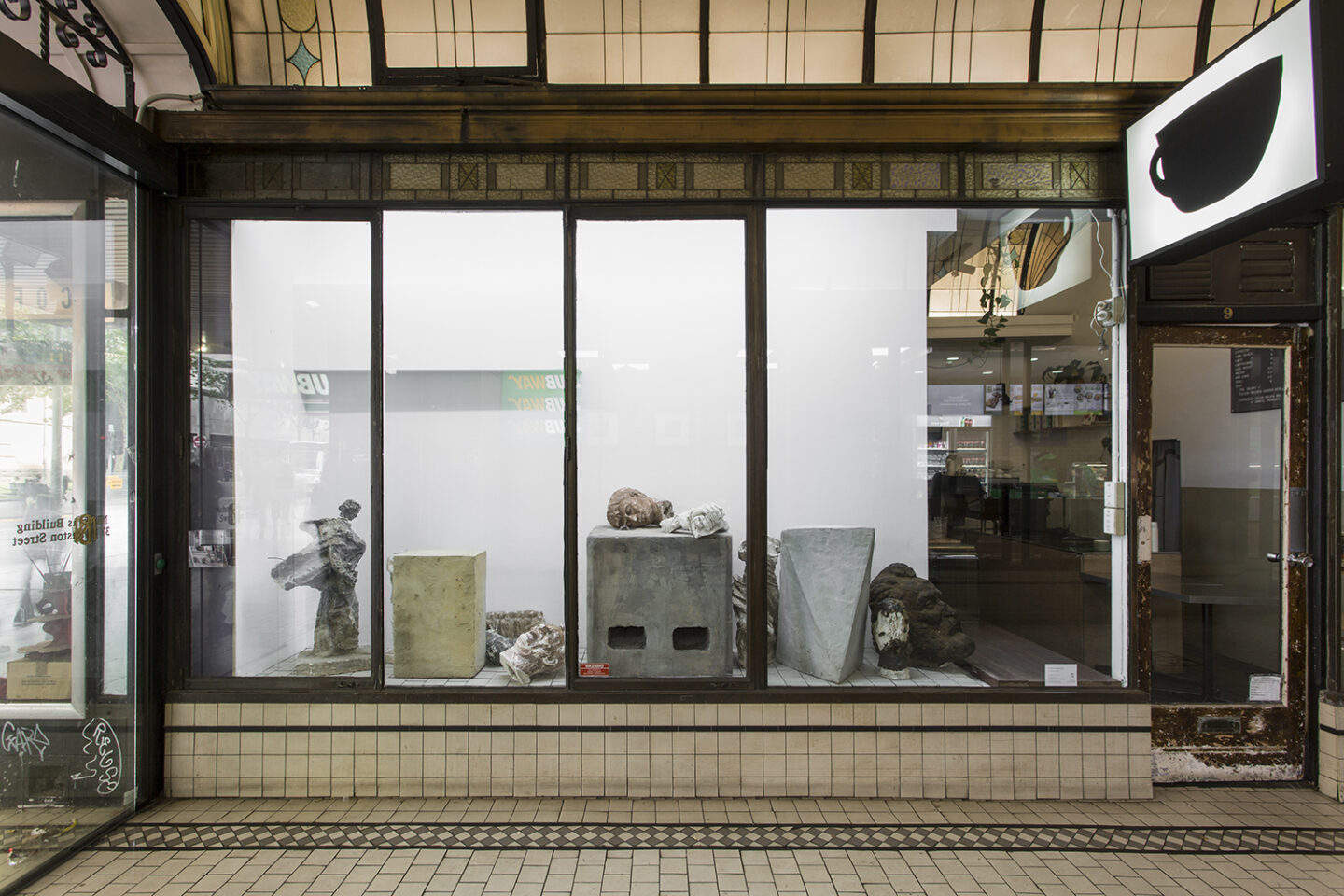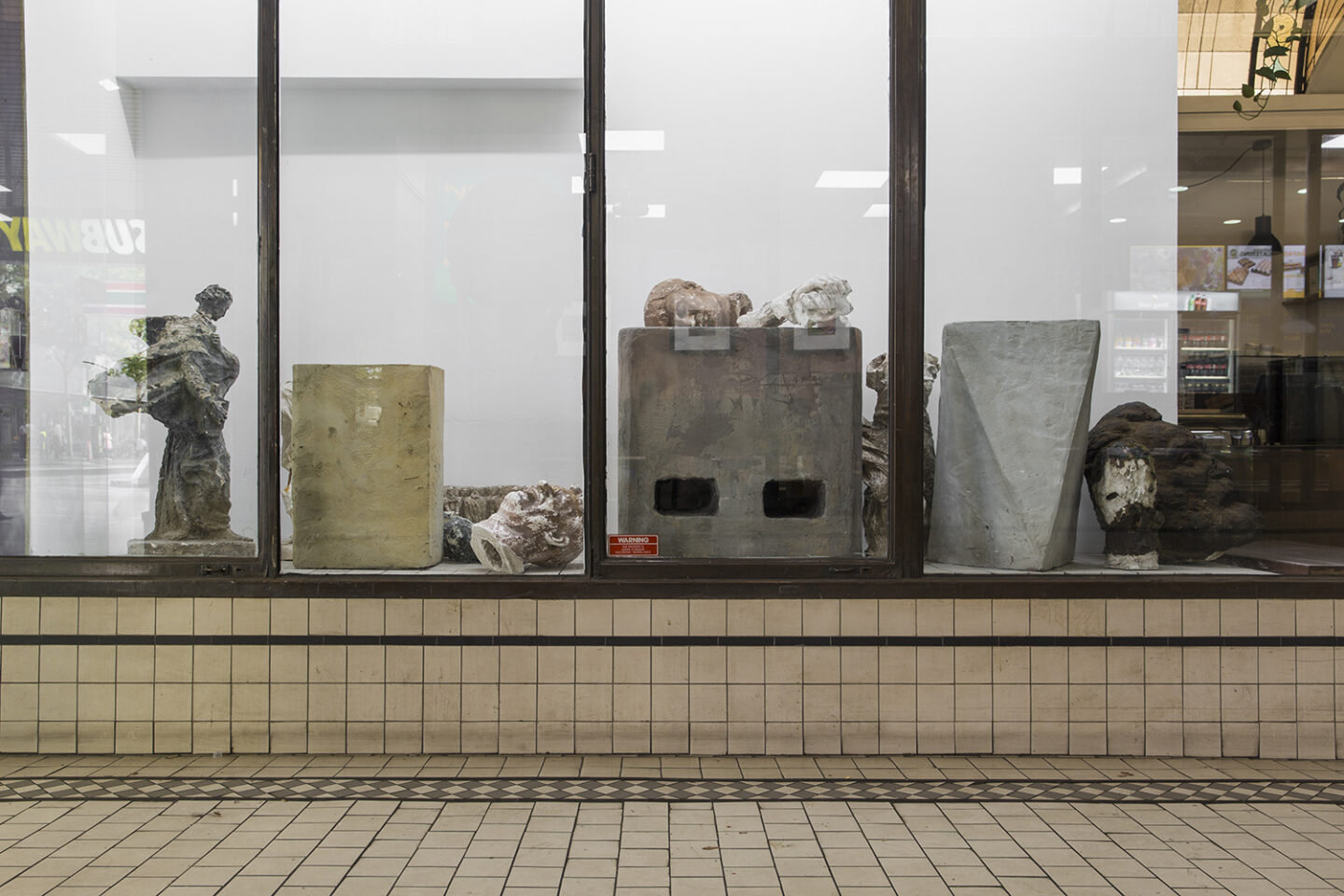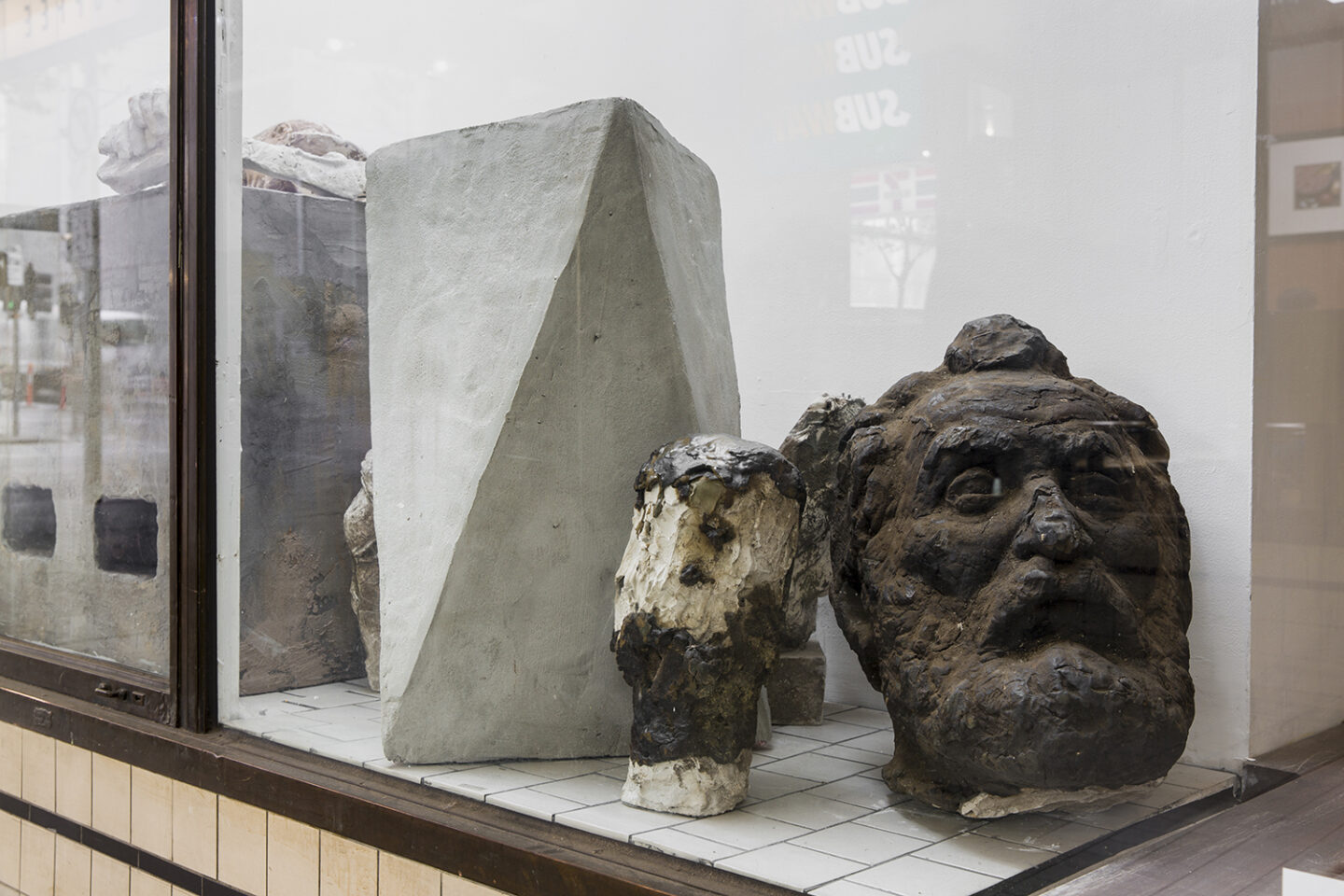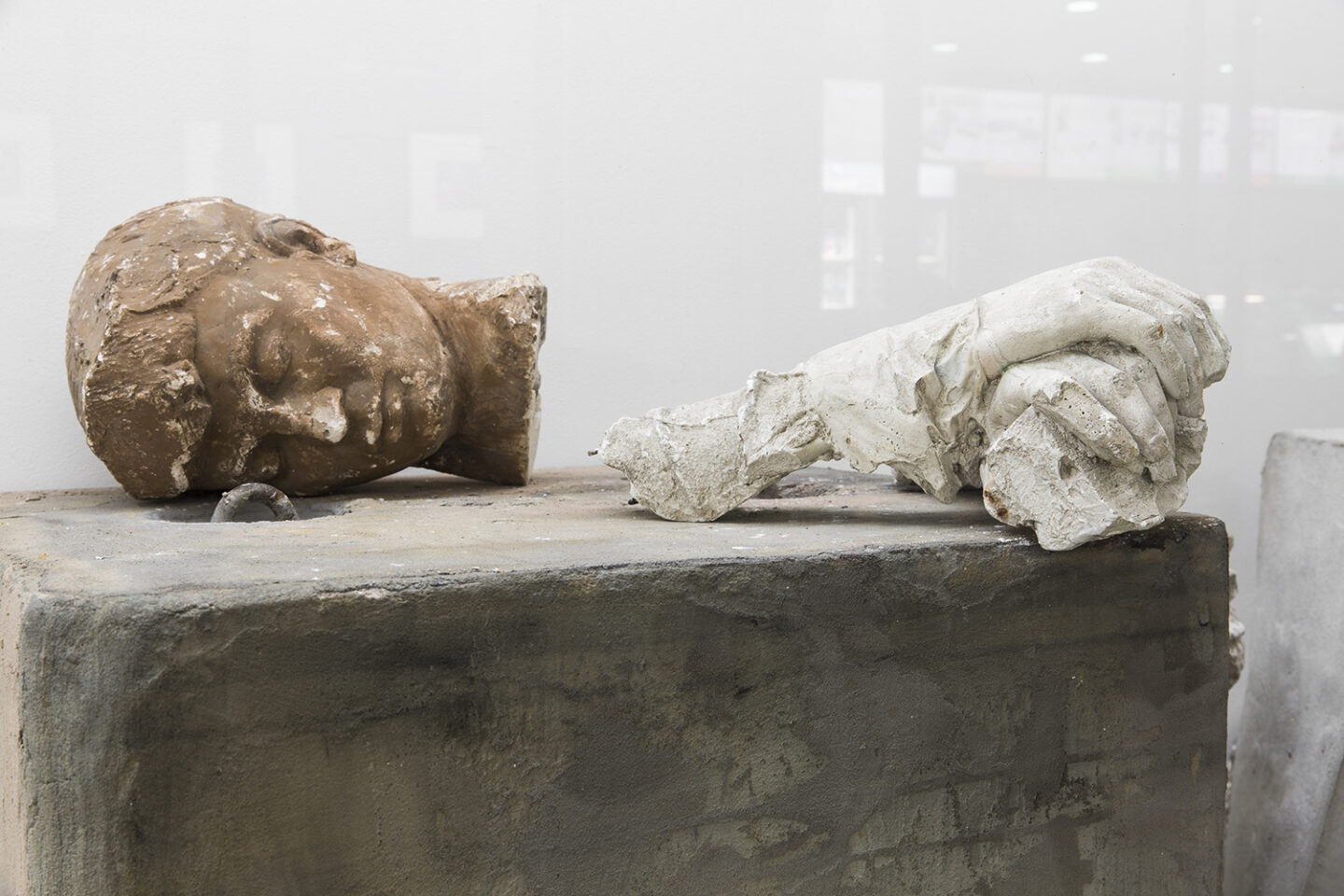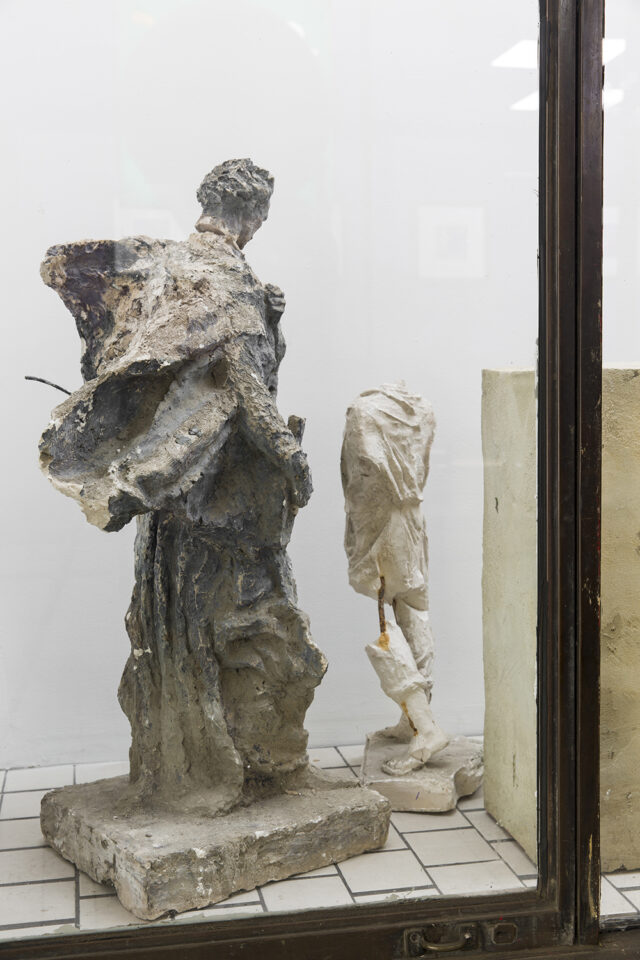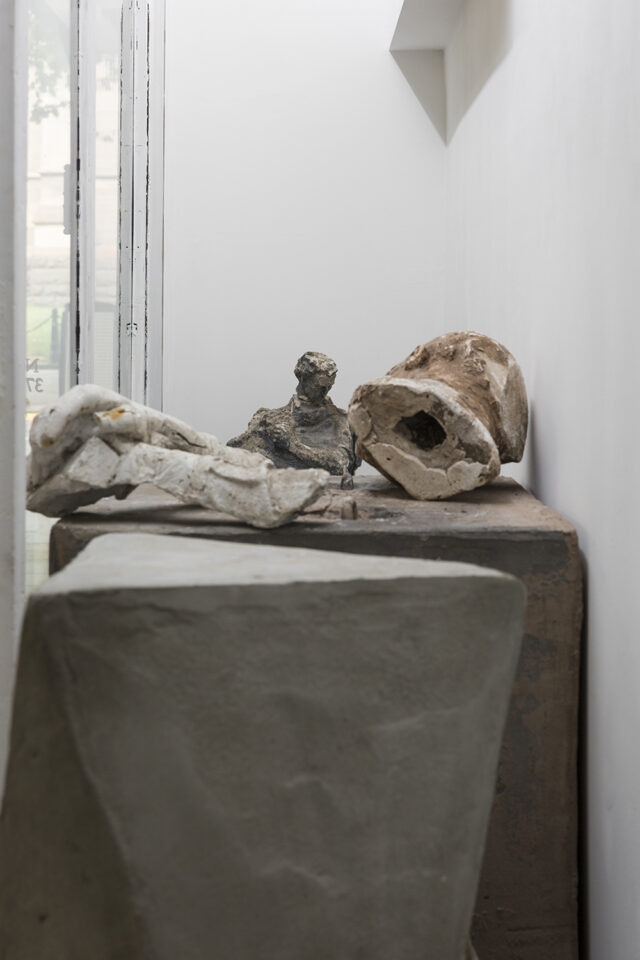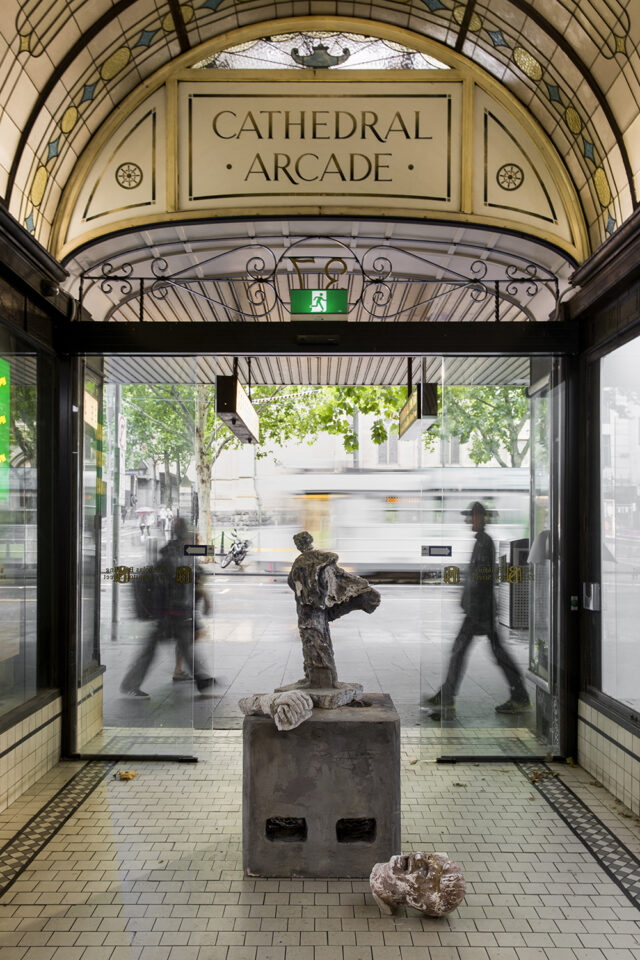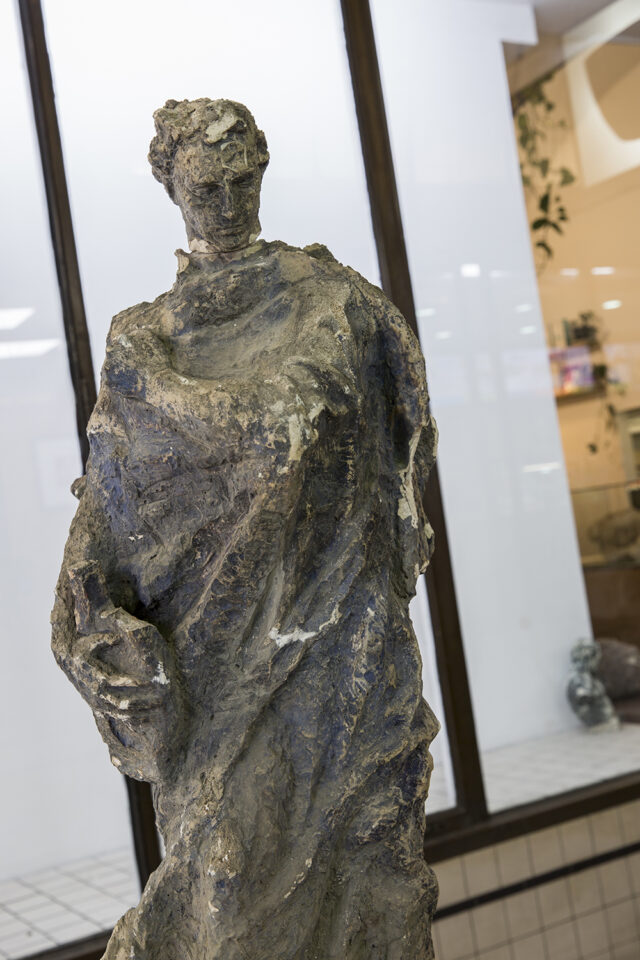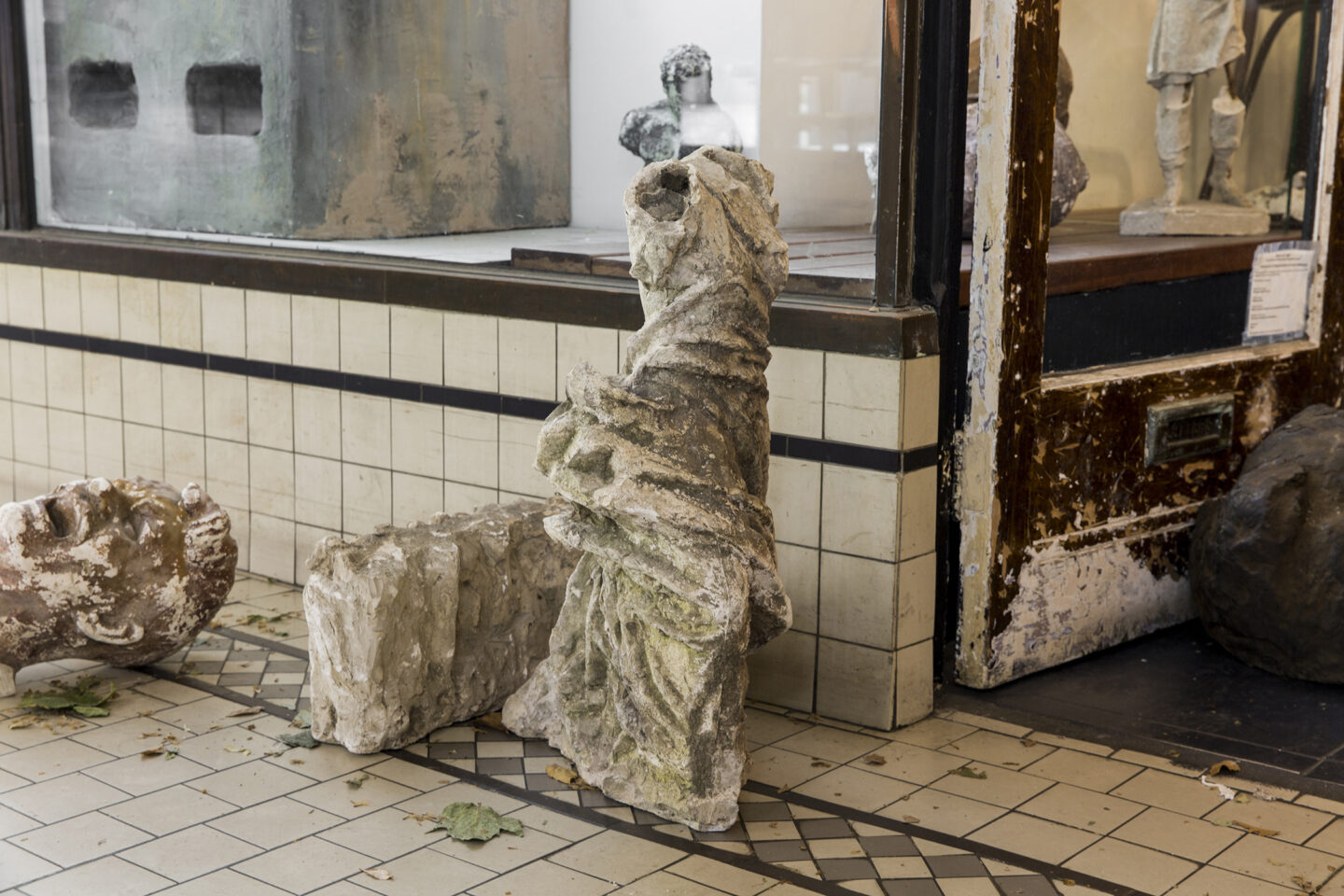Re collection
Cathedral Cabinet, Nicholas Building
Selected sculptures from the studio archive of Valentin Topuridze (1907-1980), polystyrene, glue, sand, cement, oxides, aluminium, dimensions variable, 2020.
Curated by Lucy Foster.
Photos by Lucy Foster.
Re collection is a meditation on precariousness and beauty. It is a meticulous collection of momentous sculptures signifying two disparate political structures; two countries, two cultures, two continents, two centuries, and two histories. In this installation Nina melds a selection of original Soviet sculptures with her own concrete bollard replicas.
The sculptures were created between 1930 and 1970 by the late Valentin Topuridze, who was commissioned by the Soviet Union state government to create a multitude of large-scale communist propaganda-art for public display across Georgia and Russia. The fall of the regime in 1991 saw most of these monuments toppled in public spaces. Topuridze’s studio archive consisting of plaster and clay moulds are mostly all that survived.
The beauty of the neoclassical sculptures initially concealed the oppressive reality of the communist regime. However, the passing of time expressed through their crumbling materiality reveal a deep sadness and historical truth. Nina was a family friend of Topuridze, and recently facilitated the transportation of his archive from Georgia to Australia where she now resides. After bearing witness to the collapse of the communist regime in Georgia and the civil war that followed, Nina migrated to Australia with her family in 1996.
Nina’s own concrete bollard replicas are a trademark of the anti-terrorist barriers commonly used by governments around the world. She has created a large body of work in response to these barriers, including the bollards in Melbourne which were erected in the central business district in 2017 as part of the Government’s effort to prevent vehicle-based terrorist attacks.
“Seeing the anti-terrorist concrete bollards brought back frightening memories of civil war. I view bollards as unintentional public monuments: a physical manifestation of fear and an embodiment of a problematic neoliberal ideology.” Nina said.
On the one hand, the cumbersome bollards can be seen as a protective boundary built for the safety of people, and on the other, a violent barrier that invokes unwarranted fear into the public space. The sculptures by Topuridze were used as propaganda by the communist party to promote the integrity of their government, all the while masking a sinister reality. re collection evokes re examination, re construction, re creation, re consideration and re alignment of two incongruous aesthetics – the historical remains of a fallen regime and the contemporary barriers – both reflecting upon our vulnerability.
